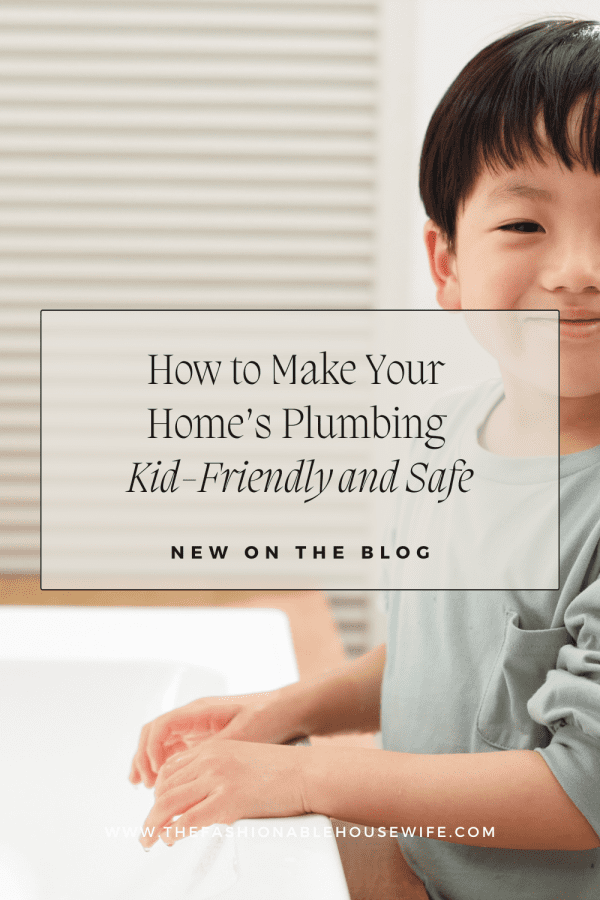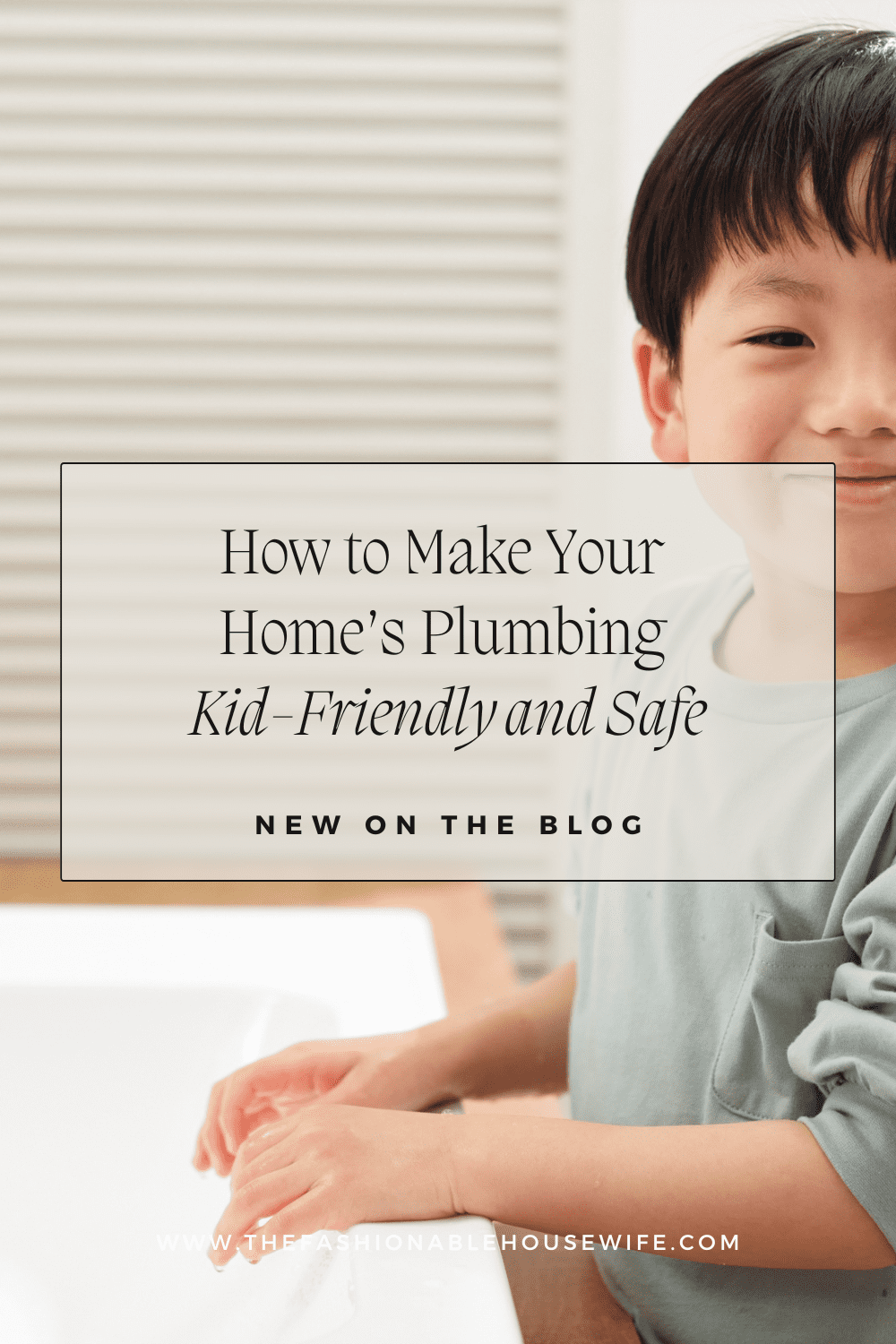How to Make Your Home’s Plumbing Kid-Friendly and Safe

When you have young children at home, childproofing goes beyond securing sharp objects and covering electrical outlets—it also includes making your plumbing safe and kid-friendly. From preventing scalding water accidents to choosing the right faucets and fixtures, small changes can make a big difference in creating a safer home. Teaching kids good plumbing habits early on can also help avoid costly clogs and repairs. While some adjustments are simple DIY fixes, consulting with a plumber can ensure your home’s plumbing system is fully optimized for child safety. Here’s what parents need to know to make their plumbing safer and more kid-friendly.
Common Plumbing Hazards for Young Children at Home
Young children are naturally curious, which makes plumbing systems a hidden danger in homes. The most common hazards include scalding from hot water, which can cause burns in seconds if temperatures exceed 120°F, and drowning risks, as even an inch of water in a tub, toilet, or sink can be dangerous. Clogs and overflows from kids flushing toys, wipes, or excessive toilet paper can create messy backups, while pinched fingers and impact injuries can result from heavy toilet lids, cabinet doors, and faucet handles. Additionally, outdated pipes or backflow issues can expose children to lead or bacteria, leading to water contamination. Using a mix of passive and active safety measures—like faucet locks and anti-scald valves—can help prevent accidents before they happen.
Beyond the usual risks, there are lesser-known plumbing hazards parents should be aware of. Micro-flooding occurs when kids play with water unsupervised, causing slow leaks that warp cabinets, rot floors, and lead to mold growth. Regularly checking under sinks for moisture can help catch these issues early. High water pressure is another concern, as kids can unintentionally leave faucets running, leading to excessive water waste and potential plumbing damage. A pressure regulator can prevent these small mistakes from turning into big problems. Toilet tank dangers also exist, as curious children may lift the lid to flush forbidden objects, exposing themselves to germ-filled water and cleaning chemicals. Installing a toilet tank lock can prevent this. Additionally, backflow risk from bath play happens when kids submerge or suck on the tub faucet, potentially pulling bathwater into the home’s clean supply, which a backflow preventer can stop. Motion-sensing flood alarms placed under sinks and near toilets can also help detect small leaks before they turn into disasters.
How to Prevent Scalding from Hot Water in Sinks and Tubs
Scalding is one of the most serious risks for young children, but it’s also one of the easiest to prevent. Lowering the water heater temperature to 120°F (49°C) reduces the risk of burns, while installing anti-scald devices at faucets and showerheads limits hot water output. A bath thermometer ensures water stays at a safe temperature, ideally around 100°F (38°C). Teaching kids to turn on cold water first and off last can also help build safe habits. Instead of relying on touch to test water temperature, which can be inaccurate, using a thermometer provides better accuracy.
Professionals often take additional steps to ensure safety. Installing a thermostatic mixing valve at the water heater, rather than just at faucets, allows for hot water to remain at the right temperature for dishwashing and laundry while keeping tap water safe. Digital temperature display faucets provide real-time readings, eliminating guesswork. Showers should have both pressure-balancing and thermostatic valves, as pressure-balancing alone does not prevent sudden temperature shifts. Since many water heaters overheat water by default to prevent bacterial growth, a point-of-use water heater under sinks or tubs can provide instant, safe hot water at the right temperature.
Best Child-Friendly Faucets and Fixtures for Bathrooms
The best child-safe plumbing fixtures blend safety, ease of use, and durability. Single-lever faucets are easier for small hands to operate compared to two-handle designs, while soft-close toilet lids prevent slamming and finger injuries. Touchless faucets reduce germ spread and prevent accidental flooding, and temperature-limiting showerheads ensure water doesn’t get too hot. Step-stool-friendly sinks, such as lower-mounted or adjustable-height options, improve accessibility for children. ADA-compliant bathroom fixtures are designed for ease of use and make excellent choices for families.
Beyond common recommendations, slow-drain tub stoppers allow water to drain slightly even when closed, preventing overflows from unattended bath play. Auto-shutoff faucets stop water flow after a set time, preventing unnecessary waste. Angled or wall-mounted toilet flush buttons reduce excessive force on handles, preventing over-flushing and damage. Plumbing-accessible vanities with lift-out back panels allow for quick leak checks, and a bathroom sink foot pedal acts as a hands-free faucet alternative that kids can use without reaching handles.
Teaching Kids Good Plumbing Habits to Prevent Clogs and Damage
Preventing plumbing disasters starts with teaching kids essential habits. Following the “only flush the three P’s” rule—pee, poop, and toilet paper—helps prevent toilet clogs. Teaching younger children to count toilet paper squares rather than grabbing handfuls reduces excess use. Demonstrating why toys shouldn’t be flushed through clear drain models or educational videos makes lessons more memorable. Encouraging kids to fully turn off taps avoids water waste and excessive bills, while making drain strainers a fun game can encourage regular use.
Interactive learning methods can make these lessons even more effective. A DIY “Plumbing Detective” game using a clear plastic pipe filled with water and small objects can help kids visualize what gets stuck and what flows freely. A “Toilet Budget” system challenges kids to use a limited number of squares per flush, making conservation fun. The “Kitchen Sink Race” experiment, where grease is washed off plates with hot and cold water, demonstrates why grease shouldn’t go down the drain. Installing low-flow toilets with dual flush options ensures kids use only the necessary amount of water per flush.
Safest Toilet and Sink Designs for Young Children
When designing a bathroom with kids in mind, compact, lower-profile toilets make it easier for little ones to reach. Dual-flush toilets with soft-close lids minimize excessive flushing and injury risks, while wall-mounted or height-adjustable sinks accommodate growing children. Rounded, no-sharp-edge designs reduce injury risks from slips and falls. Motion-activated faucets eliminate the need for twisting or gripping.
Commercial child-safe bathrooms often feature adjustable-height toilets and sinks, “no gap” toilet seats to prevent pinched skin, and vanities with built-in step stools for safer access. Infrared touch-free flush systems reduce germ exposure. A Japanese-style bidet toilet can improve hygiene while reducing toilet paper use, lowering the risk of UTIs and rashes in children.
How Anti-Scald Devices and Faucet Locks Improve Plumbing Safety
Several tools add an extra layer of safety. Anti-scald valves limit water temperature at specific fixtures to prevent burns, while faucet locks stop kids from turning on taps unsupervised, particularly in kitchens and laundry rooms. Tub spout covers protect against bumps and bruises, toilet seat locks prevent toddlers from exploring, and overflow drain covers limit bathtub water levels. A pressure-balancing shower valve ensures stable water temperature, preventing sudden hot water surges.
These safety tools also provide financial and maintenance benefits. Faucet locks reduce slow leaks that can increase water bills, and anti-scald valves prevent pipe stress from rapid temperature changes. Auto-flush urinals are useful for boys, helping with potty training and preventing messes. A smart water shutoff valve, such as Flo by Moen, detects unusual water usage and stops leaks automatically, preventing water damage in case of accidental flooding.
Child-Safe Plumbing Upgrades That Make Bath Time Safer and Easier for Kids
Upgrading plumbing fixtures can make bath time more enjoyable and stress-free. Thermostatic mixing valves maintain a consistent, safe water temperature, while non-slip bathtub coatings provide grip without the need for removable mats. Handheld showerheads are ideal for rinsing off soap without submerging a child underwater, and step-up stools with grips help kids reach sinks without slipping. Overflow protection drains prevent overfilled tubs.
Additional features can further improve safety. Temperature-controlled LED bath faucets change color with water temperature, providing a visual cue when water is too hot. Self-draining tubs prevent accidental overflows, while bathtub grab bars disguised as towel racks offer a stylish yet functional safety solution. Floating drain covers prevent kids from sitting directly on drains, reducing suction hazards. A gentle rainfall showerhead can make rinsing easier for children who dislike water on their faces.
Make Your Plumbing Kid-Safe Now
Parents can prevent plumbing-related injuries by choosing the right fixtures, reinforcing smart habits, and utilizing safety tools designed for kids. The best approach is proactive—setting up a child-safe bathroom before accidents happen. For expert recommendations or installation tips, consult a licensed plumber specializing in family-friendly home upgrades.

